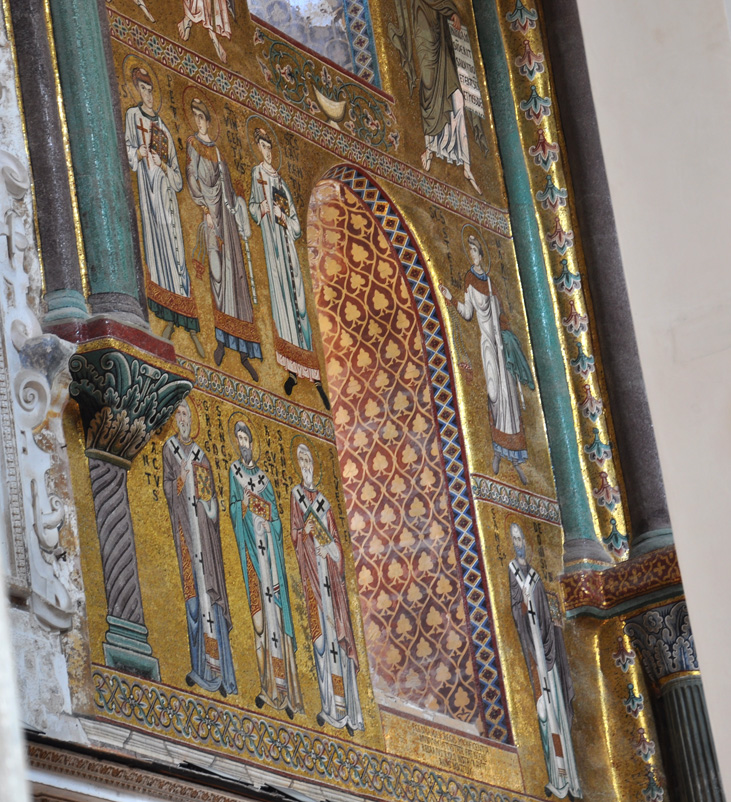When the prefect heard of all this he ordered that all the parties be executed. "The pagans" stabbed Archemius to death with a sword, stoned Paulina and her mother, and beheaded Peter and Marcellinus.
Images of St. Peter the Exorcist are rare. Usually they give the saint a promotion into the clergy. Jameson (II, 244) mentions two works in which he is dressed as a priest: a fragment from the Roman catacombs and a Renaissance painting where he and Marcellinus baptize Paulina together.
In the 12th-century mosaic at right, Peter is tonsured and dressed as a deacon in a procession with other deacon saints. The second and fourth deacons in the procession hold censers while the first and third (Peter and Lawrence) hold hand crosses. In Orthodox iconography a hand cross is the attribute of a martyr.
Caxton may have been influenced by this iconography when his translation of the Legend rendered the Latin title De Sancto Petro Exorcista as "The Life of S. Peter the Exorcist or Deacon."
Prepared in 2014 by Richard Stracke, Emeritus Professor of English, Augusta University

Mosaic of St. Peter the Exorcist (Cefalù Cathedral, 12th century. For details, see below.)

The above image is taken from this procession of deacon saints (upper register) and bishop saints (lower). St. Peter is the figure on the left in the upper register. See the description page for discussion and a larger copy of this image.)
DATES
- Feast day: June 2
- The two saints' year of death is traditionally recorded as 304, during the height of the Diocletian persecution.
BIOGRAPHY
- Golden Legend #79
- Acta Sanctorum, June vol. 1, 170-209.